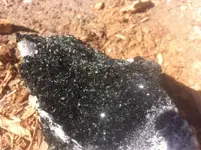Khamul
Tenderfoot
- Joined
- Mar 16, 2015
- Messages
- 1
- Reaction score
- 0
- Golden Thread
- 0
- Primary Interest:
- All Treasure Hunting
Hi. I am a newbie member of these forums.
to be frank my real purpose of Registering here is that i am about buying a Ruby Ring (cause i wanna use it's magics, its a truly long story) and its very important to me. so i am in need of a real Ruby, not the ones made in chemical labs or, glasses mixed with ruby, etc. so how can i detect a real ruby from a fake one? Remember that i have no access to any advanced gemology tool in a shop! so give me methods as simple as you can.
very thankful if you could help me,
faithfully yours.
to be frank my real purpose of Registering here is that i am about buying a Ruby Ring (cause i wanna use it's magics, its a truly long story) and its very important to me. so i am in need of a real Ruby, not the ones made in chemical labs or, glasses mixed with ruby, etc. so how can i detect a real ruby from a fake one? Remember that i have no access to any advanced gemology tool in a shop! so give me methods as simple as you can.
very thankful if you could help me,
faithfully yours.





